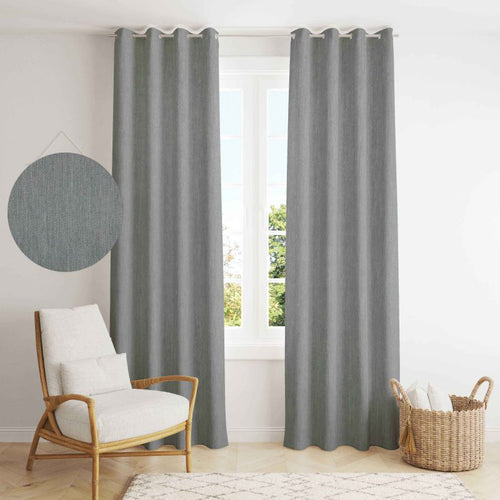Curtains for Hotel Rooms: A Comprehensive Guide

Curtains are a vital component of hotel room design, serving both functional and aesthetic purposes. The choice of curtains can significantly impact the guest experience, influencing factors such as privacy, sleep quality, and the overall ambiance of the room. In this comprehensive guide, we'll explore the different aspects to consider when selecting curtains for hotel rooms, including types, materials, styles, and practical considerations.
Types of Curtains

-
Blackout Curtains:
Blackout curtains are essential for hotel rooms, particularly in urban settings where light pollution can disrupt sleep. These curtains are designed to block out external light completely, creating a dark environment that promotes restful sleep regardless of the time of day.
-
Sheer Curtains:
Sheer curtains are made from lightweight, translucent fabrics that allow natural light to filter into the room while maintaining a degree of privacy. They are often used in combination with blackout curtains, providing flexibility for guests to adjust the lighting to their preference.
-
Thermal Curtains:
Thermal curtains are designed to provide insulation, helping to regulate the room's temperature by blocking out heat in the summer and retaining warmth in the winter. This can contribute to energy efficiency and enhance guest comfort.
-
Acoustic Curtains:
In noisy environments, acoustic curtains can help reduce sound transmission, creating a quieter and more serene atmosphere for guests. These curtains are typically thicker and constructed from materials that absorb sound.
Materials

-
Polyester:
Polyester is a popular choice for hotel curtains due to its durability, affordability, and ease of maintenance. It is resistant to wrinkles, shrinking, and stretching, making it ideal for high-traffic environments.
-
Cotton:
Cotton curtains offer a natural, breathable fabric that is soft to the touch. While cotton can provide a luxurious feel, it may require more maintenance and can be prone to wrinkling.
-
Linen:
Linen curtains have a distinctive texture and an elegant drape, lending a sophisticated look to hotel rooms. However, linen is also more prone to wrinkling and may require special care.
-
Velvet:
Velvet curtains add a touch of luxury and opulence to hotel rooms. They are thick and heavy, providing excellent light-blocking and sound-absorbing properties. However, velvet can be more challenging to clean and maintain.
-
Silk:
Silk curtains exude elegance and luxury, making them suitable for high-end hotel rooms. They have a natural sheen and drape beautifully but are delicate and require careful handling.
Read More: How to Choose the Right Material for Curtains?
Styles

-
Classic Drapes:
Classic drapes feature a timeless design with pleated tops and a full-length drop. They are versatile and can be styled to suit various decor themes, from traditional to contemporary.
-
Roman Shades:
Roman shades offer a sleek and modern alternative to traditional curtains. They are made from fabric panels that fold up neatly when raised, providing a clean and uncluttered look.
-
Layered Curtains:
Layering curtains involves using a combination of sheer and blackout curtains. This allows guests to control the level of light and privacy by adjusting the layers as needed.
-
Eyelet Curtains:
Eyelet curtains have metal rings at the top, which slide onto a curtain rod. They create uniform, soft folds and are easy to open and close, making them a practical choice for hotel rooms.
Practical Considerations

-
Maintenance and Durability:
Hotel curtains should be easy to clean and maintain, as they are subject to frequent use and potential stains. Machine-washable fabrics like polyester are ideal for their low-maintenance properties. Additionally, curtains should be durable enough to withstand regular handling and exposure to sunlight without fading or deteriorating.
-
Fire Safety:
Fire safety is a crucial consideration in hotel environments. Curtains should be made from flame-retardant materials or treated with fire-resistant coatings to comply with safety regulations and ensure guest safety.
-
Energy Efficiency:
Curtains can play a role in the energy efficiency of hotel rooms. Thermal curtains help reduce energy costs by providing insulation, while blackout curtains can minimize the need for air conditioning by blocking out heat from the sun.
-
Aesthetic Cohesion:
Curtains should complement the overall design and color scheme of the hotel room. Consider the style, pattern, and color of the curtains to ensure they enhance the room's decor and create a cohesive look.
-
Customization:
Custom curtains can be tailored to fit the specific dimensions and design requirements of hotel rooms. Customization allows for a perfect fit and the ability to choose fabrics, colors, and styles that align with the hotel's brand and aesthetic.
Installation and Hardware

-
Curtain Rods and Tracks:
The choice of curtain rods or tracks depends on the style of the curtains and the design of the room. Rods are suitable for eyelet and classic drapes, while tracks are ideal for heavier curtains or when a more streamlined look is desired.
-
Tiebacks and Holdbacks:
Tiebacks and holdbacks are decorative and functional accessories that hold curtains open, allowing natural light to enter the room. They can be chosen to match the curtain fabric or add a contrasting accent.
-
Motorized Options:
Motorized curtains offer convenience and luxury, allowing guests to open and close curtains with the touch of a button. This feature is particularly appealing in high-end hotel rooms and can be integrated with smart room technology.
Conclusion
Curtains are a critical element in hotel room design, impacting both functionality and aesthetics. When selecting curtains for hotel rooms, it's essential to consider the types, materials, styles, and practical considerations to ensure they meet the needs of guests and enhance their stay. From blackout curtains that ensure a restful sleep to luxurious silk drapes that add a touch of elegance, the right curtains can elevate the guest experience and contribute to the overall success of the hotel. By prioritizing maintenance, safety, energy efficiency, and aesthetic cohesion, hoteliers can make informed choices that align with their brand and create a welcoming, comfortable environment for their guests.
